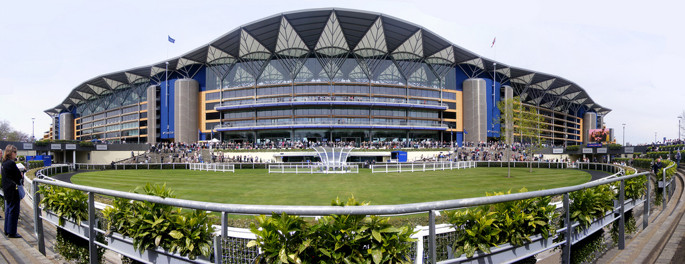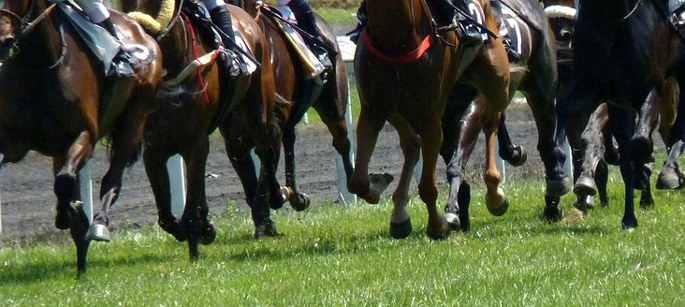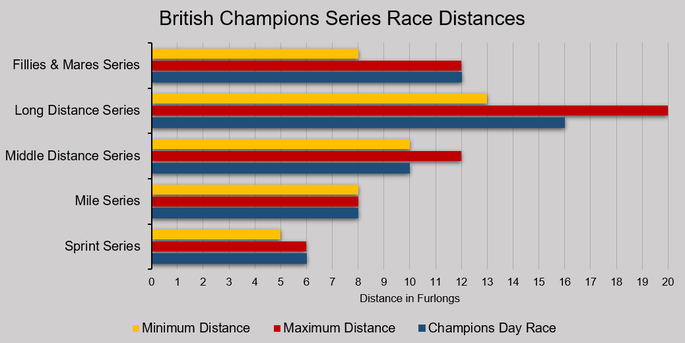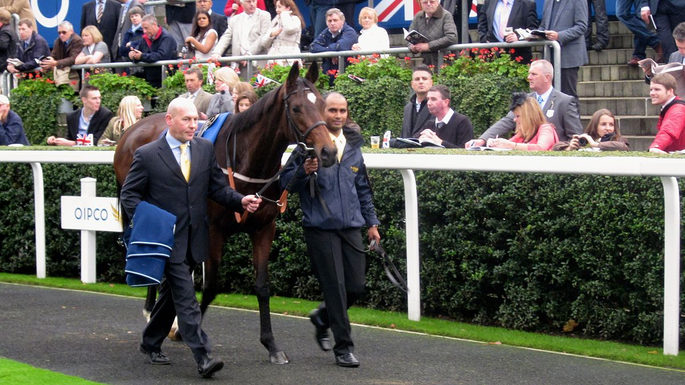Fast Facts
- When: 19th October 2024
- Where: Ascot Racecourse, Berkshire, England
- Watch: ITV
- Official Website: QIPCO British Champions Day
There are few if any tracks in Britain which can match Ascot in terms of the quality of the surroundings and facilities on offer. The high class of the venue is invariably matched by the standard of action on the track and the QIPCO British Champions Day is no exception.
The Berkshire venue is of course synonymous with the Royal Meeting earlier in the season, but in terms of single day action, British Champions day is tough to beat.
With stars aplenty on show we attempt to decipher which will shine the brightest in each of the day’s six races here, as well as highlight the best betting offers to take advantage of.
Existing Customer Free Bets & Money Back Offers
Note: Offers will appear here nearer the event as and when they become available.
Event Stats
QIPCO British Champion Series 2023 Leading Horses
| Series | First | Second | Third |
|---|---|---|---|
| Sprint | Live In The Dream | Bradsell | Khaadem |
| Mile | Big Rock | Paddington | Triple Time |
| Middle | Mostahdaf | Hukum | Westover |
| Long Distance | Continuous | Trawlerman | Quickthorn |
| Fillies & Mares | Mawj | Warm Heart | Soul Sister |
British Champion Series 2023 Leading Jockeys
| Position | Jockey | Wins | 2nds | 3rds |
|---|---|---|---|---|
| 1 | Frankie Dettori | 8 | 6 | 0 |
| 2 | Ryan Moore | 5 | 6 | 6 |
| 3 | Oisin Murphy | 3 | 3 | 2 |
| 4 | Hollie Doyle | 3 | 1 | 2 |
| 5 | Jim Crowley | 3 | 0 | 1 |
| 6 | William Buick | 1 | 1 | 2 |
| 7 | Rossa Ryan | 1 | 1 | 1 |
| 8 | Tom Marquand | 1 | 1 | 1 |
| 9 | Chris Hayes | 1 | 1 | 1 |
| 10 | Jamie Spencer | 1 | 0 | 3 |
| 11 | Andrea Atzeni | 1 | 0 | 1 |
| 12 | Callum Rodriguez | 1 | 0 | 0 |
| 13 | James Doyle | 1 | 0 | 0 |
| 14 | Sean Kirrane | 1 | 0 | 0 |
| 15 | Neil Callan | 1 | 0 | 0 |
British Champion Series 2023 Leading Trainers
| Position | Trainer | Wins | 2nds | 3rds |
|---|---|---|---|---|
| 1 | John & Thady Gosden | 8 | 7 | 2 |
| 2 | Aidan O’Brien | 6 | 5 | 6 |
| 3 | Roger Varian | 2 | 2 | 3 |
| 4 | Andrew Balding | 2 | 2 | 2 |
| 5 | Julie Camacho | 2 | 0 | 0 |
| 6 | Dermot Weld | 1 | 1 | 1 |
| 7 | Kevin Ryan | 1 | 1 | 0 |
| 8 | Karl Burke | 1 | 0 | 2 |
| 9 | Marco Botti | 1 | 0 | 1 |
| 10 | Charlie Appleby | 1 | 0 | 1 |
| 11 | Archie Watson | 1 | 0 | 1 |
| 12 | Saeed Bin Suroor | 1 | 0 | 0 |
| 13 | Alan King | 1 | 0 | 0 |
| 14 | Charles Hills | 1 | 0 | 0 |
| 15 | Christopher Head | 1 | 0 | 0 |
About British Champions Day

When it comes to British horse racing, few courses have the prestige and instant name recognition that Ascot is able to boast. The Berkshire course sits virtually in the shadow of Windsor Castle and hosts twenty-six days of meetings throughout the year. One of those is Champions Day, which is the culmination of the British Champions Series. It is a highlight of the flat racing season and proves the flexibility offered by Ascot, when you consider that the course is also well-known for its jump racing.
As with pretty much any other meeting on the British horse racing calendar, qualification for these races takes place over the course of the year. As they are all the culmination of the various racing categories, horses need to have performed to a particular standard in order to gain the right to run in the different races. See below for more on this in detail.
In terms of the format of the day, the order of races can be changed from year to year, as can the timings. As an example though, the gates to Ascot opened at 10:30am in 2023, the first race was underway at 1.15pm, with the final of the six races at 4.25pm.
The Formation of British Champions Day

Though the idea behind the formation of a Champions Day had been long in the making, putting it into practice obviously required the races. That was relatively simple, given that both Ascot and Newmarket had hosted end of season meetings for years and these meetings had high quality much-loved races as part of them.
These races needed to be brought together in one spectacle, so those held at Ascot simply had their dates moved and the ones from Newmarket changed course altogether. The Ascot races included the Diadem Stakes and the Queen Elizabeth II Stakes, whilst Newmarket’s offerings were the Champion Stakes, the Jockey Club Cup and the Pride Stakes.
The races not only moved date, time and course, but some of them were also given new names. This was because it was decided that they would become the culmination of each discipline within the British Champions Series, with a rebrand necessary in some cases in order to ensure the new event had a sense of self.
A Look at The British Champions Series

If you’re going to explore the day that is the culmination of a series of races then you’d do well to firstly look at those races in order to better understand where they fit into the horse racing calendar. The idea for the series came about back in 2011 when it was realised that there was no defined formality to the manner in which the British flat season progressed and concluded. On top of that, flat racing has never engaged casual racing fans in the same way that jump racing has, with the likes of the Cheltenham Gold Cup and the Aintree Grand National always gaining far higher TV audiences than any flat race could dream of.
It was hoped that a more formal flat racing championship would stimulate interest in the sport amongst those more casual viewers. Whether or not it succeeded remains the cause of some debate, though the attendances figures of races that were part of the new series back in 2011 when compared to the average attendance across racing as a whole suggests it was a successful enterprise; races involved in the series saw a 7% increase in attendance compared to a 3.9% increase in those not involved.
The Champions Series was sponsored by the Qatar Investment and Projects Development Holding Company, known as QIPCO, from the moment that it was launched. In June of 2015 the Qatari Investment group confirmed that it would extend its sponsorship deal until at least 2024, offering the largest sum of money ever seen in British horse racing sponsorship of more than £50 million.
The British Champions Series is split up into five different divisions, dictated by the type of races involved. These are as follows:
- Sprint Races – The Sprints are over either five or six furlongs
- Mile Races – All of the Mile races are, unsurprisingly, over one mile
- Middle Distance Races – These are either one mile and two furlongs or one mile and four furlongs
- Long Distance Races – These vary but the shortest is over one mile and six furlongs
- Races for Fillies & Mares – Ranging from one mile to one mile and four furlongs

The races are split up over the course of the season, talking place at different venues. Here’s a look at the races that are part of the British Champions Series in each discipline:
Sprint Series
| Race Name | Distance | Course | Month Held | Ages |
|---|---|---|---|---|
| King’s Stand Stakes | 5 Furlongs | Ascot | June | 3 yo + |
| Commonwealth Cup | 6 Furlongs | Ascot | June | 3 yo |
| Diamond Jubilee Stakes | 6 Furlongs | Ascot | June | 4 yo + |
| July Cup | 6 Furlongs | Newmarket | July | 3 yo + |
| Nunthorpe Stakes | 5 Furlongs | York | August | 2 yo + |
| Haydock Sprint Cup | 6 Furlongs | Haydock | September | 3 yo + |
| British Champions Sprint Stakes | 6 Furlongs | Ascot | October | 3 yo + |
The Sprint Series include two races over five furlongs, the King’s Stand from Royal Ascot and the Nunthorpe from York. The rest are all at six furlongs.
Mile Series
| Race Name | Course | Month Held | Ages |
|---|---|---|---|
| 2,000 Guineas | Newmarket | May | 3 yo |
| Lockinge Stakes | Newbury | May | 4 yo + |
| Queen Anne Stakes | Ascot | June | 4 yo + |
| St. James’s Palace Stakes | Ascot | June | 3 yo |
| Sussex Stakes | Goodwood | July | 3 yo + |
| Sun Chariot Stakes | Newmarket | October | 3 yo + |
| Queen Elizabeth II Stakes | Ascot | October | 3 yo + |
There no variation in the Mile Series, all 7 races are at that distance. The opening race in the series is the first classic of the year, the 2000 Guineas in May. Other races include the St James’s Palace Stakes at the Royal meeting and one of the most valuable races in the flat calendar – The Sussex Stakes at Glorious Goodwood.
Middle Distance Series
| Race Name | Distance | Course | Month Held | Ages |
|---|---|---|---|---|
| Coronation Cup | 1 Mile 4 Furlongs | Epsom | May | 4 yo + |
| Epsom Derby | 1 Mile 4 Furlongs | Epsom | June | 3 yo |
| Prince Of Wales’s Stakes | 1 Mile 2 Furlongs | Ascot | June | 4 yo + |
| Eclipse Stakes | 1 Mile 2 Furlongs | Sandown | July | 3 yo + |
| King George VI & Queen Elizabeth Stakes | 1 Mile 4 Furlongs | Ascot | July | 3 yo + |
| Juddmonte International Stakes | 1 Mile 2 Furlongs | York | August | 3 yo + |
| Champion Stakes | 1 Mile 2 Furlongs | Ascot | October | 3 yo + |
The middle distances races start at Epsom’s Derby Festival with the Coronation Cup and the Derby itself. Both are run over 12 furlongs with the Derby restricted to the 3-year-old classic generation. The series then drops down to one mile two furlongs with the exception of the King George VI & Queen Elizabeth Stakes from Ascot.
Long Distance Series
| Race Name | Distance | Course | Month Held | Ages |
|---|---|---|---|---|
| Yorkshire Cup | 1 Mile 5 Furlongs | York | May | 4 yo + |
| Ascot Gold Cup | 2 Miles 4 Furlongs | Ascot | June | 4 yo + |
| Goodwood Cup | 2 Miles | Goodwood | August | 3 yo + |
| Lonsdale Cup | 2 Miles 1/2 Furlong | York | August | 3 yo + |
| Doncaster Cup | 2 Miles 2 Furlongs | Doncaster | September | 3 yo + |
| St Leger Stakes | 1 Mile 6 Furlongs | Doncaster | September | 3 yo |
| Long Distance Cup | 2 Miles | Ascot | October | 3 yo + |
The Long Distance series is for the top stayers of the flat season. The longest race featured is the marathon Ascot Gold Cup over two and a half miles. The final race in this series before Champions Day is the last classic of the season – The St Leger from Doncaster.
Fillies and Mares Series
| Race Name | Distance | Course | Month Held | Ages |
|---|---|---|---|---|
| 1,000 Guineas | 1 Mile | Newmarket | May | 3 yo |
| Epsom Oaks | 1 Mile 4 Furlongs | Epsom | May | 3 yo |
| Coronation Stakes | 1 Mile | Ascot | June | 3 yo |
| Falmouth Stakes | 1 Mile | Newmarket | July | 3 yo + |
| Naussau Stakes | 1 Mile 2 Furlongs | Goodwood | August | 3 yo + |
| Yorkshire Oaks | 1 Mile 4 Furlongs | York | August | 3 yo + |
| Fillies & Mares Stakes | 1 Mile 4 Furlongs | Ascot | October | 3 yo + |
This series exclusively for fillies and mares includes two classics, for 3-year-olds only, in the 1000 Guineas and the Epsom Oaks. In total there are three races at one mile, three races at one mile and a half and the Nassau Stake and one mile and a quarter.
The Champions Day Races

By Renewmar, Wikimedia Commons
We’ve told you about the series of races that builds up to British Champions Day, but what about the details of the Championship contests and their history? We’ll have a look at that now.
The British Champions Long Distance Cup
Inaugurated as long ago as 1873, the Long Distance Cup originally belonged to Newmarket and boasted the aforementioned name of the Jockey Club Cup. It was originally run over two and a quarter miles but has lost the quarter mile for the Champions Series. Having received Group 3 status in 1971, it was upgraded to Group 2 in 2014. The most successful horse in its history is Further Flight with five wins, which is just two fewer than Sir Gordon Richards managed as the race’s most successful jockey. Barry Hills was the trainer of Further Flight, contributing to his seven wins as trainer.
The British Champions Sprint Stakes
As with the Long Distance Cup, the name tells you which discipline this race is the final for. First run at Ascot in 1946 as the Diadem Stakes, it changed its name in October 2011 when it became part of the Champions Series. It was upgraded to a Grade 1 race in 2015 and is for three-year-olds and over. Both Set Fair and Jack and Jill have won the race twice, whilst Lester Piggott is its most successful jockey thanks to his seven wins. Walter Nightingall was the trainer of both Set Fair and Jack and Jill, making him the joint-most successful trainer with four wins, alongside Vincent O’Brien.
The British Champions Fillies & Mares Stakes
The final race in the Series for Fillies & Mares used to be known as the Princess Royal Stakes and was renamed as the Pride Stakes in 2008 in honour of a winner of the Champion Stakes. As with other races, it received its current name in 2011 as part of the Champions Series rebrand. It was upgraded to Grade 1 status in 2013 at the same time that its prize money was doubled. Two horses, Shebeen and Crystal Capella, have won it twice, whilst that old favourite of Lester Piggott has won it the most times as a jockey with eight victories. John Dunlop is the race’s most successful trainer thanks to his nine wins.
Queen Elizabeth II Stakes
This race was created in 1955 when a race known as the Knights’ Royal Stakes was renamed in the monarch’s honour. When grading was introduced in 1971 it was a Group 2 offering, becoming a Group 1 race in 1987. It was always been run at Ascot and became part of the Champions Day meeting when it was formed in 2011, seeing its prize fund increased to £1 million. It’s raced over a mile and is the final race of the season for that category. Willie Carson is the event’s most successful jockey with eight wins, two of them coming on Rose Bowl which, along with Brigadier Gerard, have won the race twice. Saeed bin Suroor has the honour of being its most successful trainer thanks to his five wins.
The Champion Stakes
Originally held at Newmarket and first run in 1877, the race switched to Champions Day in 2011 and is the finale of the Middle Distance races. When it made the switch to Ascot it also saw its prize pool increase to £1.3 million, making it the richest single race in British horse racing at the time. Tristan is the race’s most successful horse with three races, whilst both Danny Maher and Charlie Elliott have won it six times apiece as jockeys. Alec Taylor, Jr. holds the record for the most wins as trainer with eight.
The Balmoral Handicap
The final race worth a mention for Champions Day is the Balmoral Handicap. It’s not the culmination of any of the categories of races mentioned earlier, but it is seen as one of the most competitive handicaps of the flat racing season. It was only introduced in 2014 so doesn’t have the history of any of the other races we’ve written about, but it’s still well worth a watch.
Interesting Facts
To be totally honest, we’ve told you most of the interesting facts around Champions Day in the details of each race. Unlike events such as the Grand National or Gold Cup, the races featured on Champions Day have moved venue, time and date over the years. As a consequence, there isn’t a clear list of the most successful horses, jockeys or trainers as there would be with a more fixed event.
What we can tell you is the following:
- In 2023 it was the richest single day in the British horse racing calendar, with more than £4.1 million worth of prize many up for grabs
- Champions Day features more Group 1 races than any other day in the racing calendar
- The Balmoral Handicap is named after the former Queen’s Scottish residence after race organisers asked her permission
- The Flat Racing Jockey Champion is named and crowned on Champions Day
